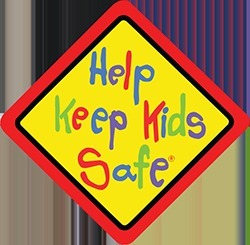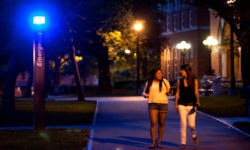
Do you practice or role play threatening situations with your kids to reinforce what they should do to protect themselves? When I say threatening situations, I don’t just mean child abductions or attacks. We mean anything and everything from bullying to sexual abuse. Do you know that 90% of sexual abuse is committed by someone the child knows? Yes, you read that right.
According to the National Center for Victims of Crime, children are most vulnerable to child sexual abuse between the ages of seven and thirteen and one in five girls and one in twenty boys is a victim of sexual abuse. Be extra cautious of who is at the home where your daughters are having sleepovers and if men you know well or who you are associated with take any special interest in your kids. Special interest by acquaintances should equal a red flag. Talk with your kids in advance of a situation about what to do if someone would try to watch them change clothes or touch them inappropriately etc. Far too often, we have seen parents are reactive rather than proactive when it comes to their kid’s safety. I have a friend that’s a retired police detective. He’s always talking about how 75% of the population is absolutely oblivious when it comes to their own safety and most people believe nothing is going to ever happen to them. Don’t fall into this camp.
At MK Protection Strategies, we are immersed in training and education as it relates to crime prevention, understanding social and antisocial violence, human trafficking, etc. The human trafficking problem can be mysterious to people, so allow me to explain a little about it. According to Do Something, human trafficking reportedly generates a profit of $32 billion globally, every year. The average age a teen enters the sex trade in the US is 12 to 14 years old. A recent January 2018 article in the WUWM News stated that sex trafficking is happening in every Wisconsin county. We have 72 counties. That said, we are informed and passionate about teaching parents and kids how to mentally, verbally and physically protect and defend themselves. When parents have talked with their kids about what to do in threatening situations, kids are more confident. When they practice other skills like walking with confidence and showing that they have situational awareness they have even more confidence. When kids understand boundaries and know what is appropriate and what is not, they become a harder target for bad guys.
In addition, explain to your kids that no means no and practice saying it like you mean it. Practice yelling it! Practice what to do if a bad guy is asking many personal questions or closing in on your child’s personal space. Talk about how situations can turn threatening very quickly and options for what kids can do.
In closing, I hope you are thinking differently after reading this article and that you can improve the confidence in your child proactively, by practicing some of the aforementioned strategies. Please reach out to us to learn more about any of the topics shared in this article or ways to better empower your child with skills and confidence to protect and defend themselves.



